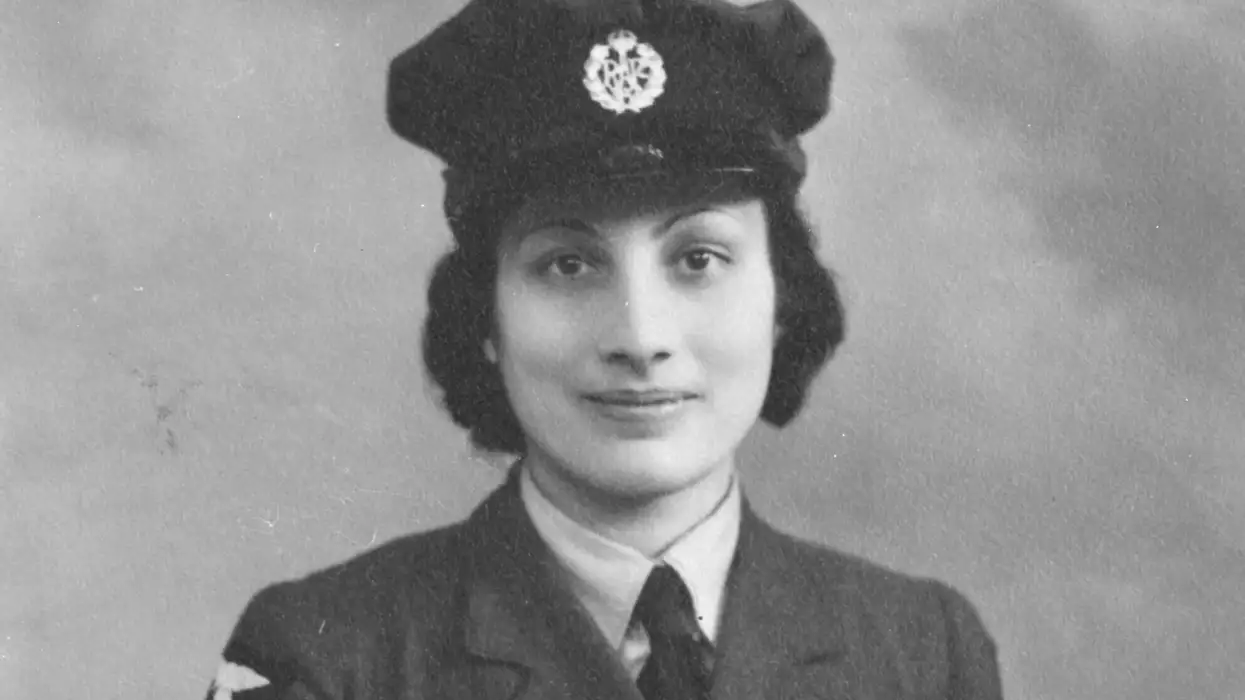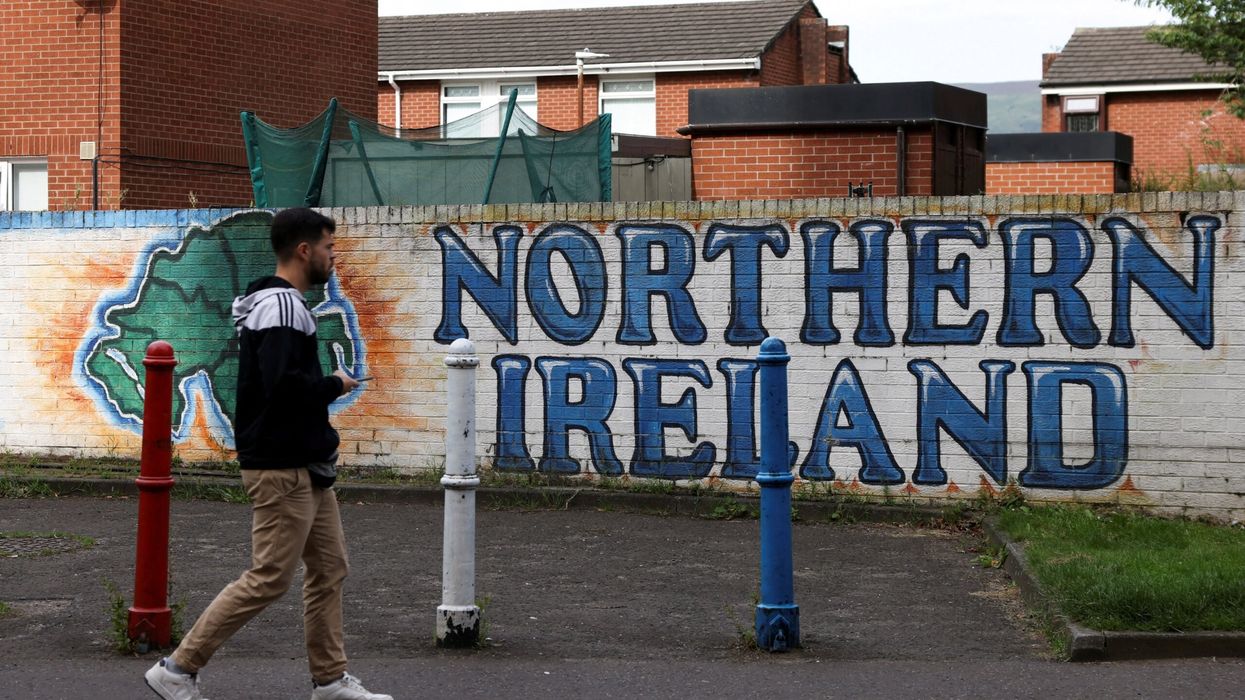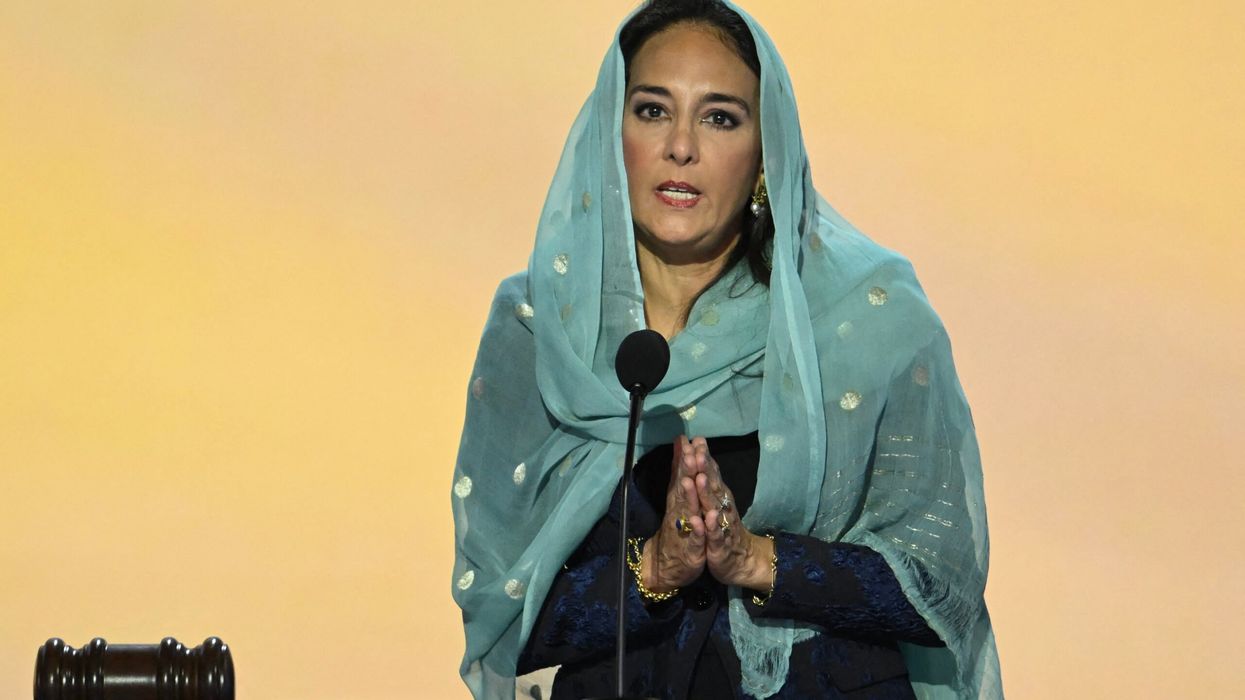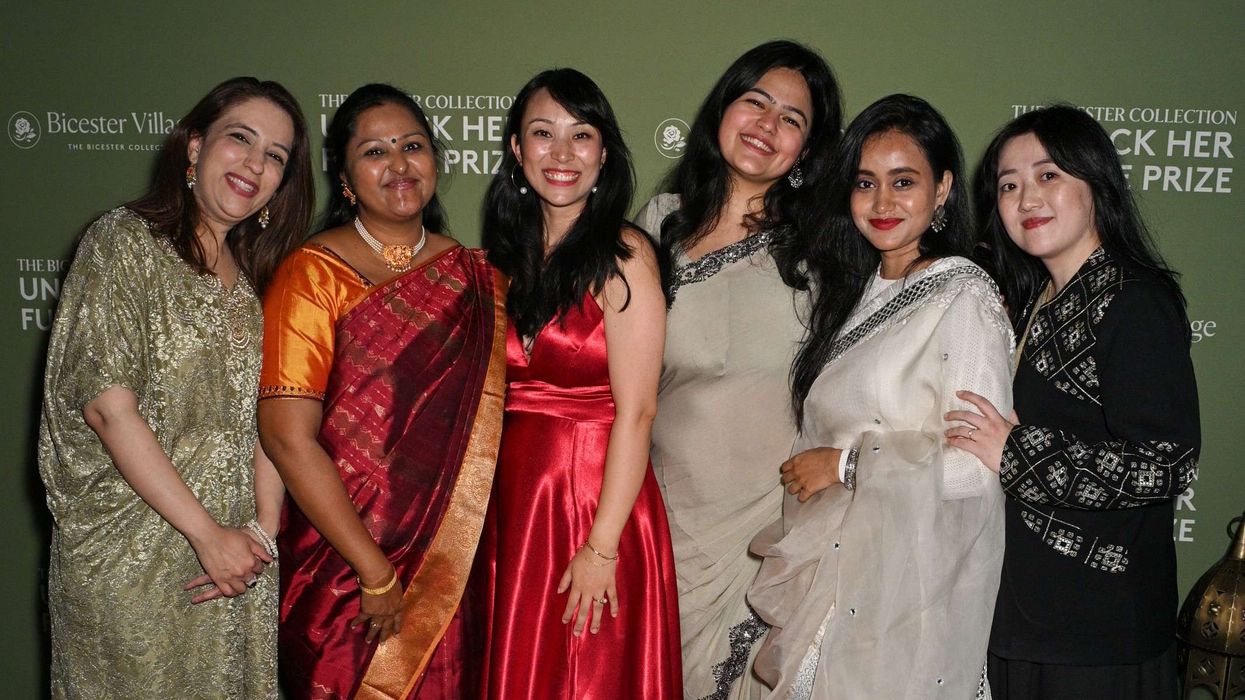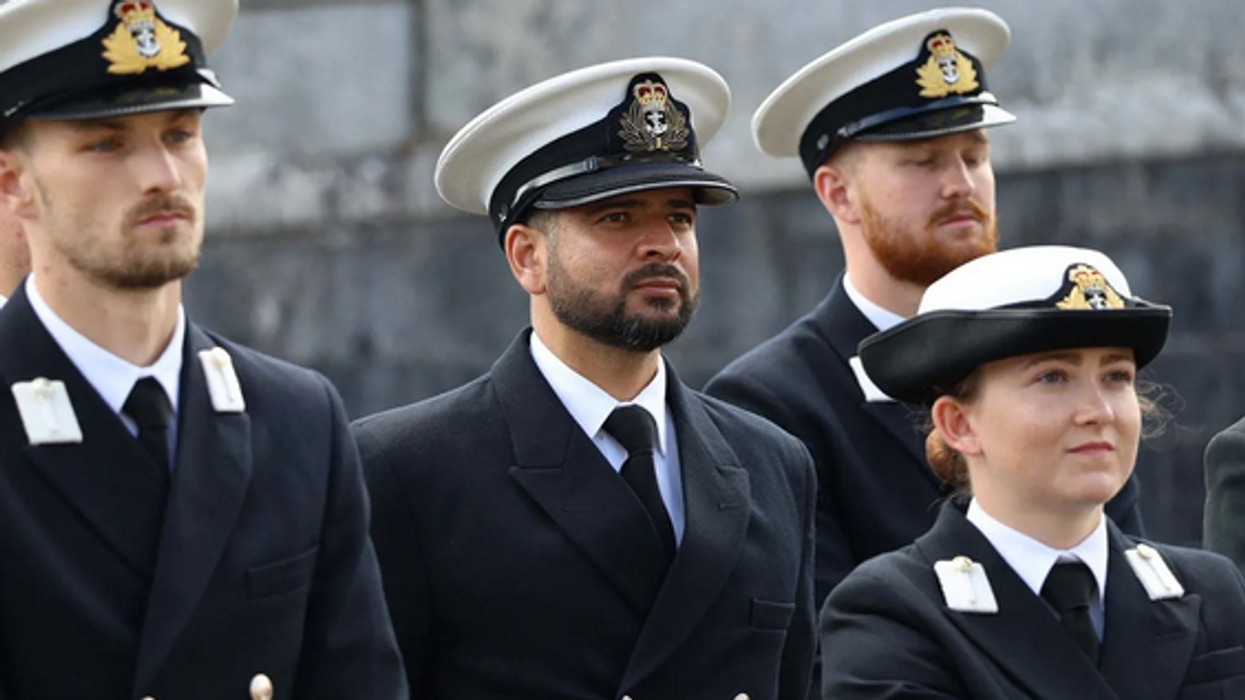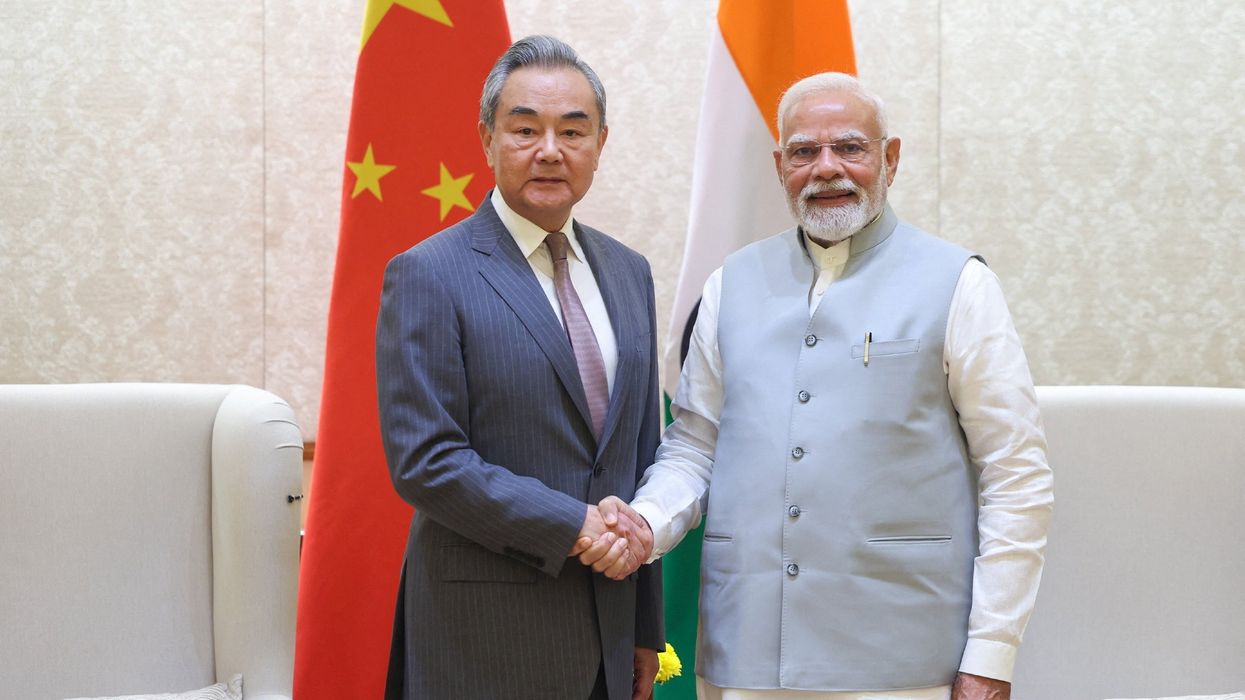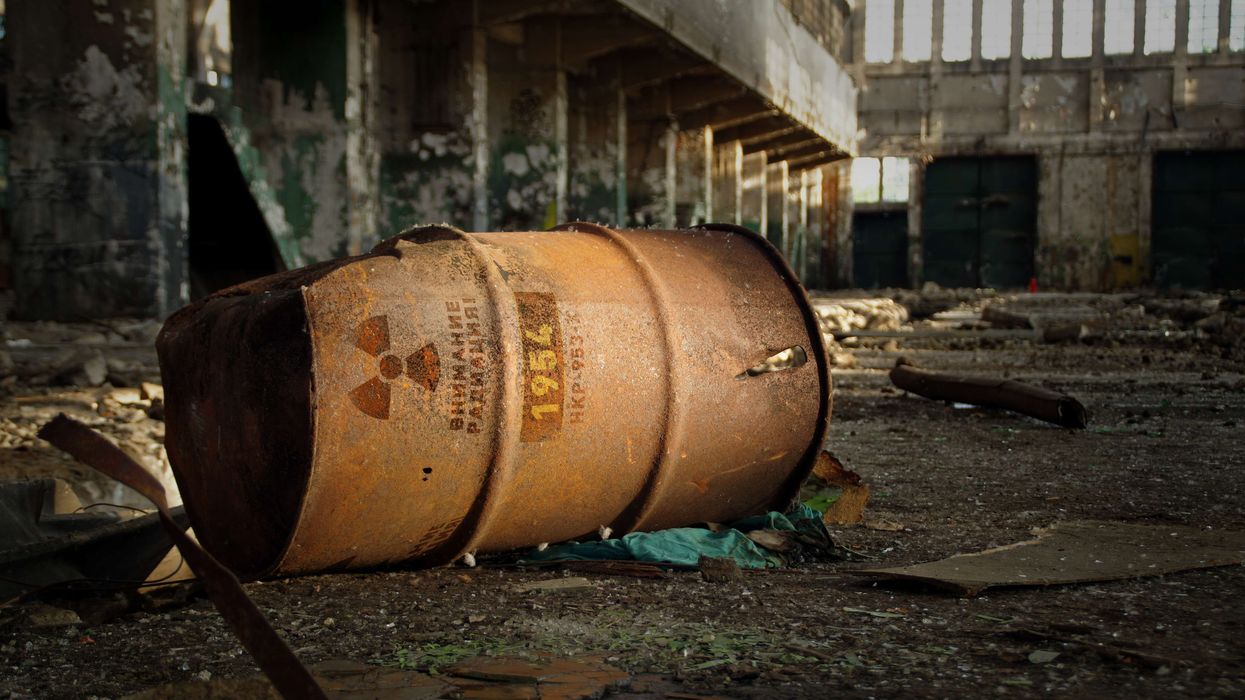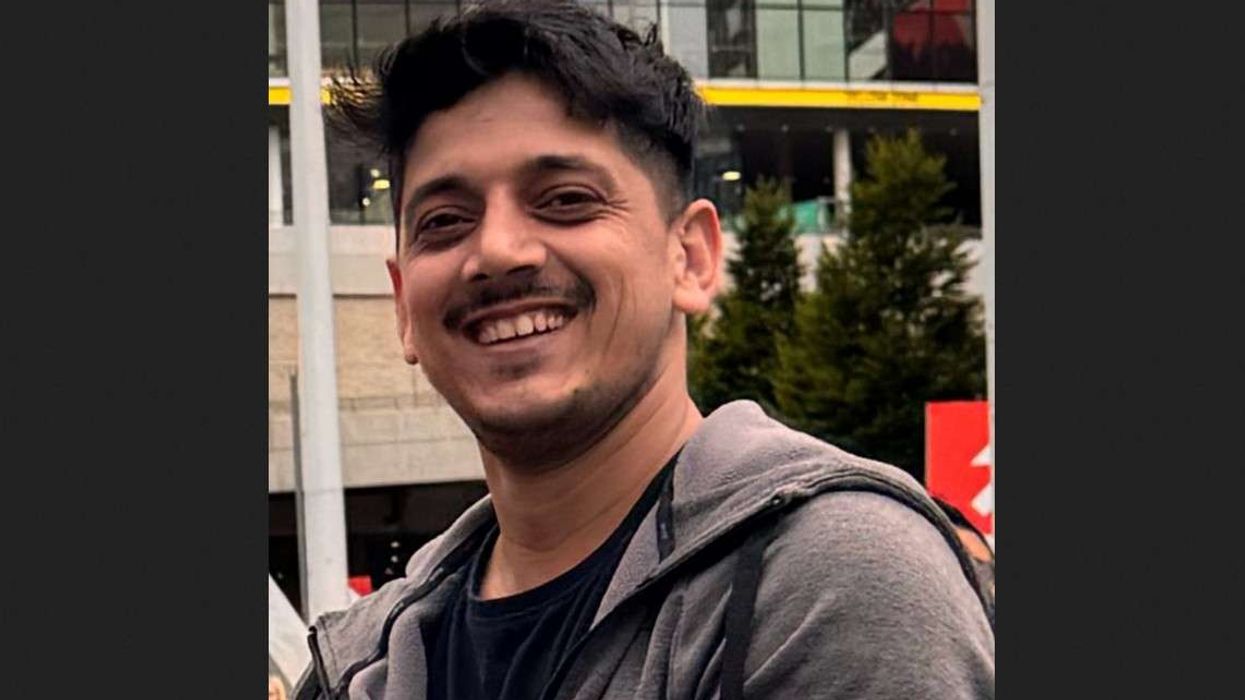THE George Cross awarded posthumously to Noor-un-Nisa Inayat Khan, an Indian origin woman who spied for Britain in Occupied France during the Second World, is to go on permanent display at the RAF Museum in Colindale, north London, from December 5.
Noor, who adopted the code name, “Madeleine”, was captured, tortured and executed by the Gestapo. She was only 30.
Her activities in Occupied France have become the stuff of legends. She has been honoured with a statue, postage stamp, films, plays, and in many other ways.
The museum said: “Born to an Indian father and an American mother, Noor was living in Paris when Germany invaded France in 1940. She escaped to Britain where she joined the Women’s Auxiliary Air Force (WAAF) and trained as a wireless operator. As a follower of Sufism, Noor was a pacifist. However, she believed that it was her duty to support the fight against Nazism.
“Noor’s technical skills and fluency in French led to her recruitment by the SOE (Special Operations Executive) and her deployment to Paris as a special agent in 1943. After Noor’s SOE colleagues were identified and arrested, she was given the option to return from enemy territory. However, she chose to remain at her post as the only SOE wireless operator in Paris. Noor was later betrayed and arrested. She endured a long period of interrogation before being executed by the Nazis at Dachau Concentration camp on 13 September 1944. Her last word was ‘Liberté!’
“The museum is displaying the George Cross that was posthumously awarded to Noor for her bravery while operating in German occupied France. It has been generously loaned to the museum by Noor’s family. The George Cross is the highest award bestowed on civilian or military personnel who have carried out an act of bravery while not under enemy fire. Noor was one of only three women to receive the George Cross.”
A sculpture of Khan in central LondonThe citation for Noor’s George Cross reads: “Assistant Section Officer Inayat Khan displayed the most conspicuous courage, both moral and physical over a period of more than 12 months.”
The new display is integrated within the museum’s ‘Strike Hard, Strike Sure: Bomber Command, 1939-1945’ exhibition. The exhibition explores the story of the incredible bravery of those in Bomber Command during the Second World War, sharing the stories of the people, aircraft and technology that enabled Allied victory.
The Westland Lysander Mk III, presented within this exhibition, is integral to Noor’s story, and the new display is located beside it. On June 16, 1943, Noor, codenamed Madeleine, was flown into France by Squadron Leader Frank ‘Bunny’ Rymills in a Westland Lysander. A record of this flight was recorded in his logbook, which is in the RAF Museum’s archive collection and on display beside Noor’s George Cross.
Noor and another female agent were flown to a field outside Angers, about 185 miles south west of Paris.
Working in perilous conditions behind enemy lines, she helped hold together the tattered remains of the Paris resistance in some of the darkest hours of the war. After months of dangerous work for the Allies in France, and avoiding detection herself, she agreed to return to the UK once a replacement was promised. But just two days before she was due to leave, she was arrested by the secret police and tortured.
She gave nothing away and was transferred to a German prison in November 1943, where she was held in solitary confinement for more than 10 months. On the morning of September 13, 1944, Noor was executed at Dachau concentration camp.
Maggie Appleton, CEO of the museum said: “We are privileged and humbled to share Noor’s George Cross with our visitors. Her story of bravery and d e t e r m i n a t i o n sings to us across the decades and we know will inspire people of all ages and from all backgrounds. The generous loan of the medal by her family, alongside the logbook that records her flight into occupied France and our Special Duties Lysander are a powerful representation of her service and sacrifice.”
Royal Mail brought out a Noor postage stamp in 2014.
“I am absolutely thrilled – it’s a great honour for India and for Indian women,” commented London-based historian Kusoom Vadgama who “discovered” Noor while conducting research for a brochure she published in 1989 on the contribution of Indian soldiers to Britain’s war effort.
“She fought and died for somebody else’s freedom,” added Vadgama, who was probably the first Indian to draw attention to Noor’s story. “I was searching for Indians involved in the war and stumbled across Noor. She was betrayed by someone from her side.”
Noor’s body was burned in a crematorium after her execution. An anonymous Dutch prisoner emerging in 1958 revealed that Noor was cruelly beaten by a highranking SS officer named Wilhelm Ruppert before being shot. “Indian women may be weak in body, but have hearts and minds of steel,” noted Vadgama.
A blue plaque commemorating Noor was erected in 2020 by English Heritage at her wartime London home on 4 Taviton Street in Bloomsbury – the house that she left on her final and fatal mission.
A photo taken before her mission to FranceWhen she was remembered in an exhibition marking International Women’s Day in 2020, Vadgama expressed her concern that Noor was being projected more as “a Muslim heroine”.
“They were all Indians,” she told Eastern Eye. “It is nothing to do with religion.” Noor’s tale was told at the Commonwealth War Grave Commission’s Runnymede Air Forces Memorial in a new digital exhibition, “Noor Inayat-Khan: A Woman of Conspicuous Courage”.
The memorial at Runnymede, overlooking the Thames on Cooper’s Hill four miles from Windsor, commemorated the names of over 20,000 airmen and women who were lost in the Second World War during operations from bases in the United Kingdom and North and Western Europe and who have no known graves.
Julian Evans, director of international and community engagement at CWGC, said: “Noor’s story is an inspirational one, and we believed it essential, as the dedicated custodians of the memorial on which her name is inscribed, to help give it greater prominence and recognition.”
According to the exhibition’s organisers, Noor was born in Moscow in 1914, but her family left Russia amid safety fears for Paris, and then London, after the outbreak of the First World War. Her father, an accomplished Indian musician and spiritual teacher, gave concerts and shared Sufi teachings.
Lucknow-born film director Ahmed Jamal, who first heard of Noor in 1986- 1987 and immediately wanted to make a movie about her, said he took out a 10-year option on the definitive biography of her life by the British author Jean Overton Fuller, to secure her story for film.
The book, published by Victor Gollancz in 1952, was called Madeleine. Jamal never got to make his film, but he told Eastern Eye: “Jean Overton Fuller met many of the people involved in Noor’s story. I, first of all, got hold of a French edition of the book and had to have it translated. It was an unheard of story – an Indian woman who gave her life for Britain. But she was deeply nationalistic. She said if it had been a choice between Britain and India, she would have chosen India. After the war, she had intended to fight for Indian nationalism, believing strongly in India’s independence.”
